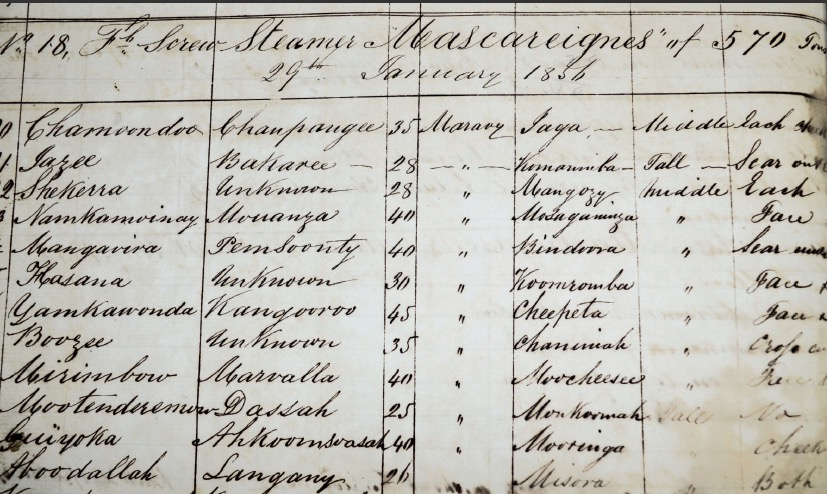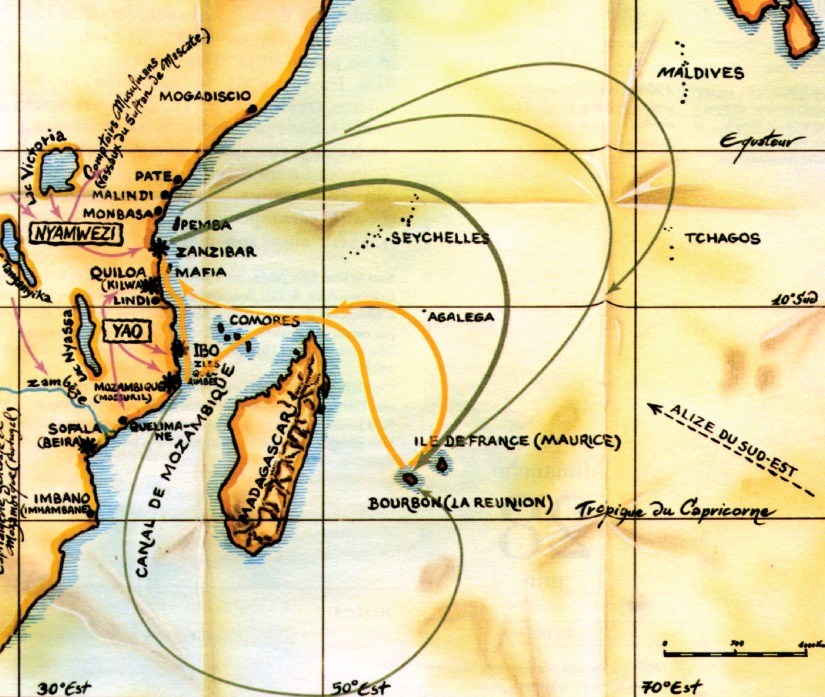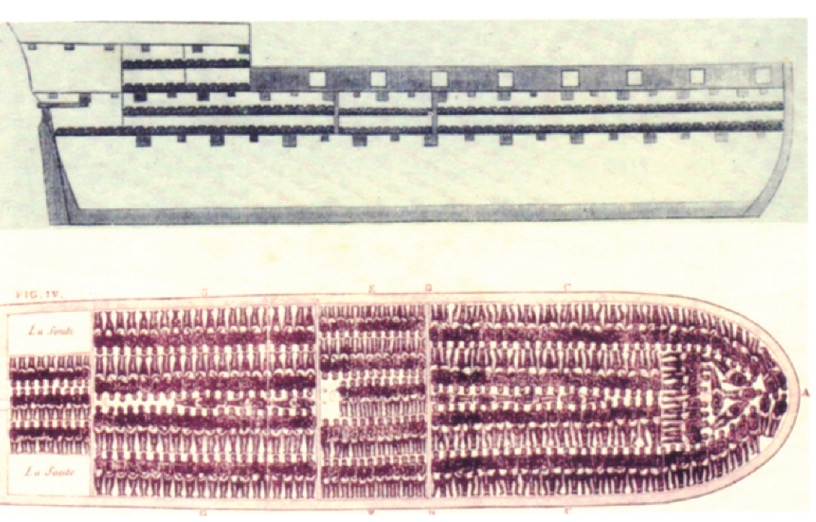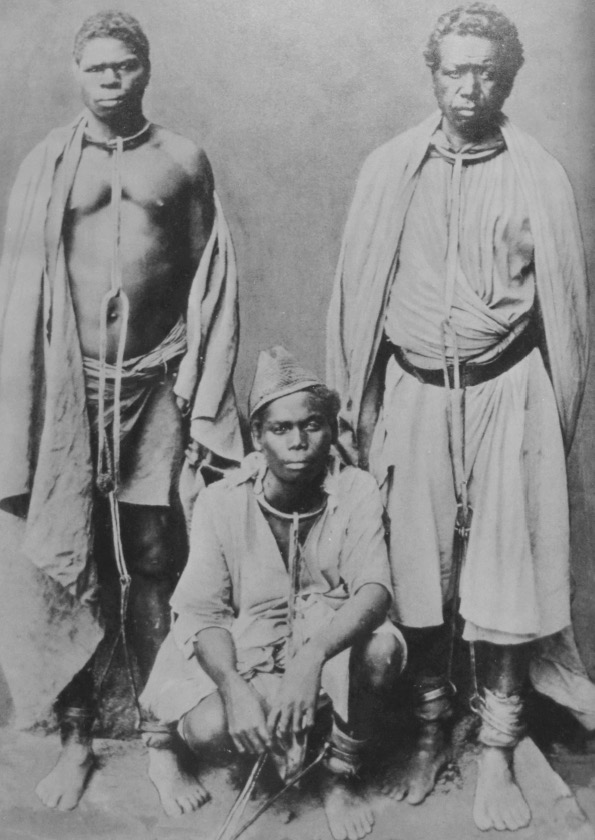By Stephan Gua, Social Activist, Artist, & Member of Rezistans Ek Alternativ
& Satyendra Peerthum, Historian, Writer, & Lecturer
On 23rd AUGUST of each year, the United Nations Educational Scientific and Cultural Organisation (UNESCO) commemorates the International Day for the Remembrance of the Slave Trade and its Abolition. The 23rd August was chosen by UNESCO because it commemorates the mass uprising of the African slaves in Bois Caïman, in the northern part of the then French colony of Santo Domingo (or present-day Haiti), on the nights of 22nd and 23rd August 1791. That particular event marked the beginning of the greatest and only successful large scale slave rebellion in modern colonial history.
UNESCO & the Slave Trade
On this special day, UNESCO encourages its member states to pay homage to the memory and sufferings of millions of African slaves who died during their transportation to European colonies in the Americas, the Atlantic Ocean and the Indian Ocean. In August 2001, just a week before the historic World Conference on Racism was held in Durban, South Africa, Mr Koïchiro Matsuura, the Secretary-General of UNESCO, called on the world community to reflect on the link between slavery, the slave trade, and racism. Indeed, slavery and the slave trade had three distinctive features: its duration of more than 500 years, its legal organisation, and the formulation of racial theories to justify it. Mr Matsuura declared: “This deep rooted link between slavery and racism is generally acknowledged by historians”
After all, Jean-Michel Deveau, a renowned French historian and who during 10 years was Vice-President of the UNESCO Slave Route Project, has called modern slavery and the slave trade: “the greatest tragedy in the history of humanity in terms of scale and duration”. This fact is not surprising because between 1526 and 1867, an estimated 12.5 million African men, women, and children were transported from Africa to various European colonies in the Americas, the Caribbean, and other parts of the Atlantic Ocean World. At the same time, only 10.7 million arrived at their destination while, a staggering 1.8 million died and were thrown overboard during the treacherous oceanic slave voyage.
Between the early 1500s and the early 1800s, it is estimated that between 1 million and 1.2 million African men, women, and children were taken from Africa to different parts of the greater Indian Ocean World including Mauritius and the rest of the Mascarene Islands with a mortality rate of between 120,000 to 150,000 individuals or more who suffered the same fate as their Atlantic counterparts. Furthermore, during that same period, over 100 million Africans were affected, either directly or indirectly, by the long-term consequences of this terrible human tragedy.
The UNESCO Slave Route Project
At the behest of Haiti and some African countries, such as Senegal, the General Conference of UNESCO approved, at its 27th Session in 1993, the implementation of the Slave Route Project as a way of remembering the slave trade, slavery, and its long term consequences. The project was launched officially during the First Session of the International Scientific Committee of the Slave Route in September 1994 in Ouidah, Benin, one of the former slave markets on the Gulf of Guinea in West Africa.
UNESCO explained that the idea of a Route basically expresses the dynamics of the movement of peoples, civilizations and culture, while that of the slave addresses not only the universal phenomenon of slavery, but also, in a more precise and explicit way, the importance of the slave trade in the history of the Americas, the Atlantic Ocean and the Indian Ocean. The Slave Route Project looks at the causes and consequences of slavery and the slave trade in various parts of the world including Mauritius. It also explores themes such as the African Diaspora and the interaction of peoples from Africa, Europe, and the Americas.
The Mauritius Slave Trade
In 1974, in La Traite des Esclaves vers les Mascareignes au XVIIIe Siècle, Jean M. Filliot, a famous French historian and writer, indicated that between the 1720s and 1790s, around 160,000 slaves were transported from East Africa and Madagascar to the Mascarene Islands. During the late 1990s, Pier Larson explained that between the 1720s and 1820s, over 200,000 slaves were introduced into Mauritius and Réunion Island from East African and Malagasy ports.
Three decades earlier, Auguste Toussaint, a Mauritian historian and former Director of the Mauritius Archives, showed that, in general, there was a high rate of mortality on slave ships operating in the south west Indian Ocean. Between 1775 and 1807, the mortality rate on 27 slave vessels which sailed from the ports of Madagascar to Mauritius and Réunion Island was 12%. Between 1777 and 1808, the death rate on 64 slave ships sailing from the coast of East Africa to the Mascarene Islands was 21%.
The slave mortality rate remained high during the early British period, when the slave trade to Mauritius became illegal. In early 1818, the Hélène lost 20% of her slave cargo, while sailing from Kilwa in East Africa to Mauritius. Later that same year, 19% of the slaves on board the St.Jean perished during the journey from Tamatave in Madagascar to Mauritius. Furthermore, in early 1821, the Succès lost 8% of its cargo on its voyage from Zanzibar to Mauritian shores. Gradually, it becomes evident that during the eighteenth and early nineteenth centuries, the slave trade to Mauritius was responsible for the deaths of thousands of slaves.

The Horror of the Slave Voyage
Between 1811 and 1826, all the African and Malagasy slaves who were rescued from slave ships by the British Royal Navy and landed in Mauritius were physically, mentally, and emotionally traumatized after experiencing the unspeakable horror of the slave voyage. This fact is clearly reflected in contemporary sources which emanate mostly from British colonial officials. In April 1818, Major General Hall, the Acting Governor of Mauritius, vividly described in a dispatch to Earl Bathurst, the Secretary of State for the Colonies in London, the inhumane condition of Malagasy captives on slave ships coming to Mauritius:

“The height of the deck from the water-casks is only two feet, and those unfortunate negroes are obliged to lie down with the head between the thighs of the other who is placed behind him, and so on to the extremity of the vessel and the numbers stowed in a small space exceed any calculation which your Lordship can form.”
Over a decade later, in June 1829, Commissioners Colebrooke and Blair, after their lengthy and detailed investigation into the illicit slave trade to Mauritius, observed in their report, that when it came to conditions slaves on slave vessels:

“The practice of chaining the negroes together has been adopted in the vessels of this colony and Bourbon; and instances have been known of their jumping overboard, although secured in pairs of iron rings rivetted to their necks and ankles, and connected with bars of iron. Whatever may be the feelings which rouse the negroes to this effort to effect their escape, it does not appear that revolts during the passage have been frequent. Small-pox has sometimes occasioned great mortality; and it may be apprehended that great numbers have perished from suffocation by closing the hatches upon them.”

Between December 1826 and November 1827, on various occasions, during his cross-examination by Thomas F. Buxton, Letord or Captain Dorval, the most notorious slave trader in the south west Indian Ocean, described the state of the African and Malagasy slaves on board slave vessels. The former Mauritian slave dealer mentioned that during the 1810s and 1820s, the slave vessels were always extremely overcrowded, diseases were rampant, there was a high mortality rate, and that he himself, he had smuggled between 3,000 to 5,000 slaves into the island illegally.
In general, these slaves were provided with barely enough water and food to survive and they were almost never brought onto the ship’s deck to breathe fresh air. Therefore, many of the African and Malagasy slaves as well as those who were captured by the British naval vessels reached Mauritian shores almost half-dead or in a terrible physical and psychological state. Between 1811 and 1827, it is estimated that between 50,000 to 60,000 slaves were illegally introduced into Mauritius and anywhere from 6,000 to 12,000 might have perished during the terrible journey. On each 23rd August, it is the horror of the slave trade which swept up tens of thousands of Africans into slavery, affected hundreds of thousands more on the African continent, and caused the deaths of thousands of individuals which needs to be remembered and commemorated each year in Mauritius.



